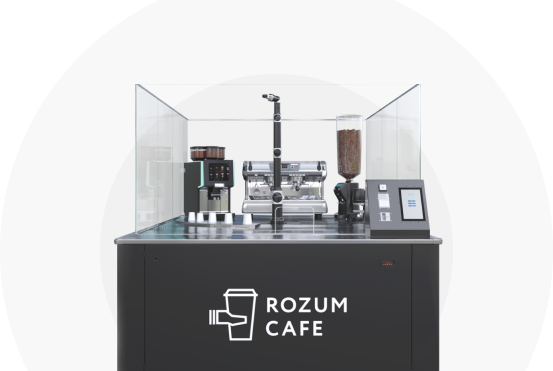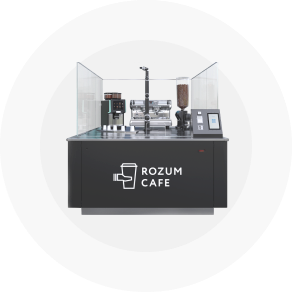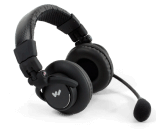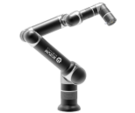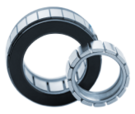A servo is a motor integrated with error-sensing hardware to make sure motion output (e.g., speed, position) matches desired values. Known for precision and performance efficiency, this actuator type has spread widely across industries. Robot offers are varied and numerous—small and cheap hobby motors, micro or even nano and pico drives, as well as larger high-torque models for heavy-duty applications.
Defining the mechanism
A standard servomechanism comprises the following components:
- a controller that reads input signals and translates them into motion parameters
- a motor, which is typically a small high-speed DC actuator linked to the controller by means of an H-bridge circuit
- a gearhead that reduces the motor RPM, while increasing torque
- a potentiometer (or another feedback device) to always know the exact position of the output shaft
What are the types
Depending on the processed signal, one can distinguish analog and digital mechanisms. The two actuator types are similar both on the outside and the inside. The major difference is the functioning principle.
Analog servos use on/off voltage pulses. The longer a pulse is, the quicker a motor rotates and the more torque it generates. Because signal is only on when you command an action, these devices are energy-efficient. For the same reason, their response is considerably slower as compared to digital counterparts. On average, on/off frequency is about 50 pulses a second. Analog mechanisms are not programmable.
Digital servos provide frequency of about 300 pulses per second, which results in better precision and allows for finer motion adjustments. These drives decelerate and accelerate faster, and their holding torque exceeds several-fold that of analog ones. A built-in microprocessor enables configuring them for lower deadbands and higher peaks.
Based on the current input, servo actuators fall into two categories—alternating current (AC) and direct current (DC). DC models have low inductive reactance, which is why they boast positioning accuracy and prompt response. AC servos are known for higher tolerance and more robust bearings. Within the AC category, it is also possible to identify the following types:
- Positional rotation
- Continuous rotation
- Linear
Positional rotation servos are mechanisms where the output shaft rotates within about 180 degrees. In such devices, gears incorporate mechanical stops that prevent movement beyond the specified limits.
Continuous rotation motors can turn indefinitely in both clockwise and anticlockwise directions at varying velocities in accordance with the command signal. These servos are often used in robot wheels.
Linear actuators operate similarly to positional rotation ones, only their motion is not spinning, but linear displacement—either in the backward or forward directions.
Standard vs. robot servos
Robotics stands apart from other servo applications in that it evolves rapidly to adopt smarter technologies, including in motion control. Standard mechanisms have been modified to fit robotics-specific tasks.
Major differences between standard and robotics-oriented drives are as follows:
Standard servo
- Require an external integration framework.
- Accept position commands only.
- Signal transmission is in one direction only; motion regulation is through variation of pulse length.
- Have considerable signal processing time; if pulse-width modulation changes too fast, reaction can lag behind.
- Each actuator requires an individual communication channel and a direct connection to a control device.
Smart servo
- Have special fittings for easy incorporation into robot limbs.
- Possible inputs include position, speed, and time.
- Employ serial communication allowing to get different types of return—velocity, temperature, etc.
- With versatile feedback, the controller can adjust component states promptly or even shut them down if anything goes wrong.
- Multiple robot actuator can be chained on a single line without the need to link them directly to the controlling unit.
As you can see, the robot modifications have provided greater accuracy of motion control based on detailed feedback. Easy integration and operation of multiple motors on the same line is also a nice bonus, considering that advanced robots include more than one servo.
How do servos work
A typical robot servo consists of the same components as a standard one—a motion core and a control loop. The motion core is a DC motor coupled with a gearhead. The higher the gear ratio, the heavier load a robot can handle.
The motion control loop in a servo robot is of the closed type, comprising the following major modules:
- a controller to orchestrate interactions between the servo system components, as well as those with external equipment
- a feedback device to make sure the output of the motion core is as commanded by the controller
The logic of interaction between the modules is the same whether we talk about a servo in an industrial machine or in a robot. The controller receives an input signal from a controlling unit (e.g., a PC). The signal contains required motion parameters, such as an angle or a linear position to reach, motor speed, or acceleration rate.
After processing the signal, the controller generates proportional output current and transmits it to the motor unit. The DC motor starts moving in accordance with the input motion profile, driving a robot joint to the required position.
The feedback device (e.g., a potentiometer or an encoder) measures how far the robot servo has rotated and sends the measurements back to the controller. The latter compares the measured values to the control input and either commands the DC motor to adjust its position or moves on to another signal.
The controller also uses the feedback for calculating other system parameters (e.g., speed, torque, and acceleration), which helps to piece together motion and load profiles. Additional built-in sensing (e.g., to measure temperature) gets you a comprehensive picture of what’s going on with your robot.
RDrive motion solutions for robotics
The continuous rotation digital actuators in the RDrive series have all the features that a proper servo robot should have:
- Slim design and notable power-to-weight ratio
- Convenient integration interfaces
- A geared motor unit providing high-torque output
- Extensive motion feedback from two built-in encoders
- Smart controllers supporting of CANOpen communication through serial ports
- And the most enticing one—an affordable price
For more information, refer to the datasheets of RDrive model range or contact us. We’d be glad to share how we built a robotic arm with servos.
